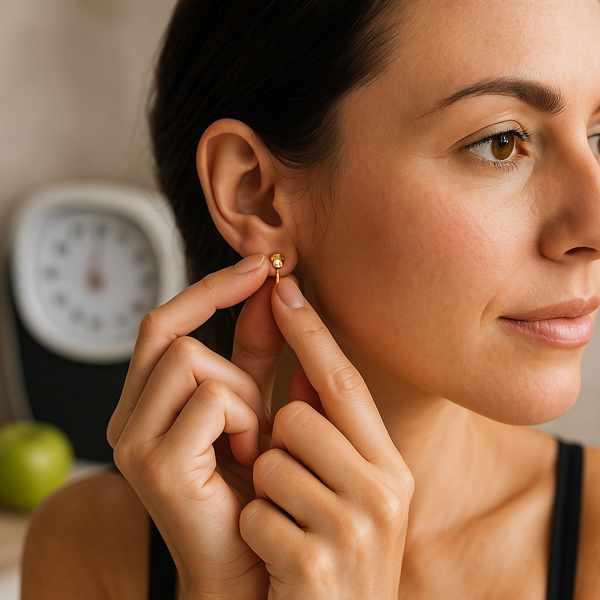
These earrings, often based on acupressure or magnetic therapy, claim to assist with appetite control and metabolism.
Let’s explore this trending accessory and how it fits into your wellness goals.
Understanding Weight Loss Earrings
These points, often located on the ear, are connected to various organs and functions in the body.
Types of weight loss earrings include:
- Designed to affect energy flow and metabolism
- Target pressure points linked to hunger and digestion
- Bio-energy earrings
The Science (or Theory) Behind It
The theory suggests that stimulating certain points can boost metabolism.
Supporters believe these earrings help by:
- Targeting the hunger-related areas of the ear
- Increasing energy levels
- Improving digestion and fat processing
It’s important to note that while anecdotal success exists, clinical evidence is still limited.
Why Some Swear by Them
Some users of weight loss earrings report noticeable changes such as:
- Feeling full more quickly during meals
- Reduced emotional or mindless eating
- More motivation to be active
- Can be worn anytime, anywhere
For many, it’s the non-invasive nature and ease of use that make them appealing.
What You Should Know Before Trying
While generally considered safe, users should be cautious if they have:
- Choose hypoallergenic materials when possible
- Monitor for irritation at the pressure site
- Always consult a healthcare provider first
Also, results can vary, and these earrings should not be used as a sole method of weight loss.
How to Make the Most of Them
To get the best out of weight loss earrings:
- Follow the manufacturer’s usage guidelines
- Eat well and stay active
- Monitor any appetite or energy changes
- Effects may take time to appear
Realistic Expectations
They may help some people as part of a broader lifestyle change, but they’re not substitutes for diet and exercise.
Think of them as:
- Supplementary tools
- Motivational accessories
- Low-risk experiments
Should You Try Them?
While scientific proof website is limited, some individuals report real benefits.
If you're considering trying them, make sure to:
- Do your research
- Set realistic goals
- Use as part of a healthy routine
In the end, they might be the extra motivation you need — or just an experiment along the way.